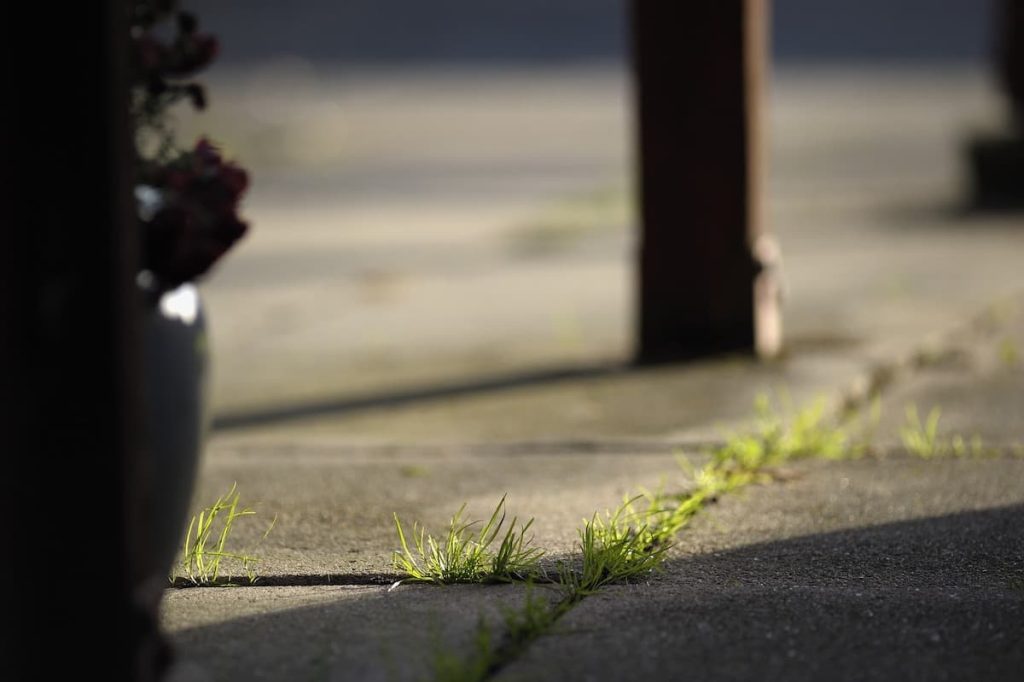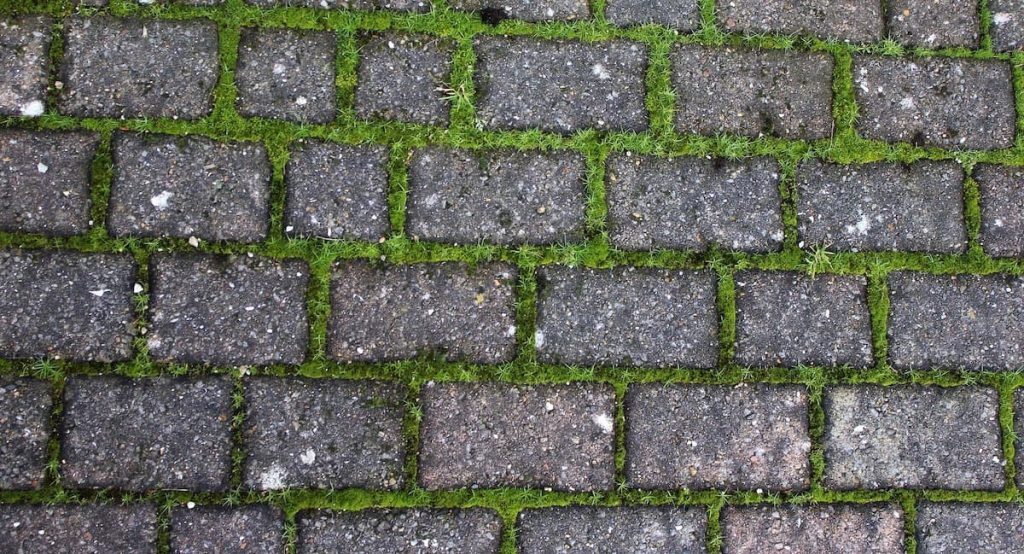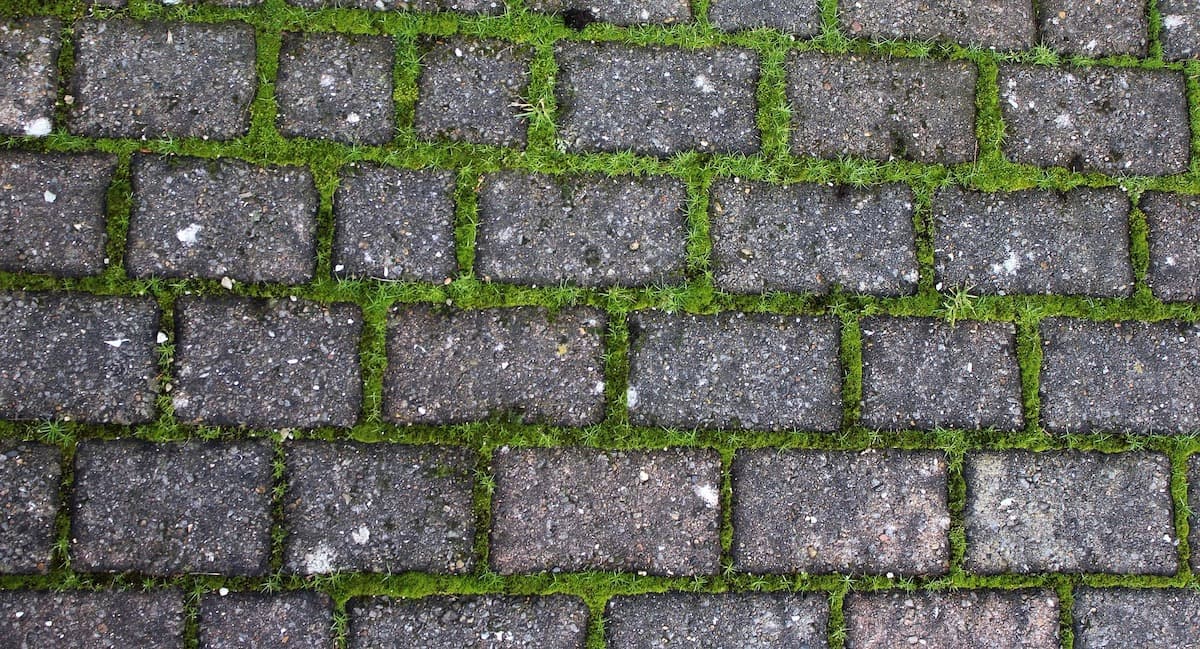The natural beauty of stone or brick patios and pavement appeals to many homeowners. The natural colour of bricks and stones complements any landscaping you decide to implement in your garden. However, such patios and pavements can look scruffy rather quickly if weeds are allowed to grow and thrive in between the stone gaps.
Herein we’ll delve into some of the best ways to remove weeds from your patios efficiently. Whether you’re dealing with buttercup, grass, chickweed, or dandelion, the methods of removing weeds will work well.
For the sake of the environment and your health, your first course of action is to consider alternatives to chemical weed killers.

#1. Uproot The Weeds By Hand
Usually, the best option for removing weeds from paving or patios is to uproot the entire plant with its roots. Taking this approach prevents the weeds from resprouting. Use a screwdriver to loosen the soil around the roots and then uproot the weeds. Thereafter seal the gaps and cracks with masonry caulk or polymeric sand in the case of your paving.
#2. Use Weeding Knife Or Hoe
You can buy a weeding tool designed to reach those hard-to-reach gaps and cracks. These tools are designed to reach deep into the soil and pull out those hardy taproots such as dandelion which resprout into new weed shoots. Such tools include v-notch, cape code weeders, block paving knives, and even a kitchen knife.
#3. Pour Boiling Water
Hot water is an effective weed killer. Additionally, you can use hot water to kill moss and algae that can make your patio or paving slippery. Boil water in a kettle until it boils. Carry the boiling water in the kettle to the spot you’re killing weeds. From a low height, douse the weeds with hot water until it saturates the entire plant. Ensure the soil around the plant is saturated with hot water as well.
For particularly stubborn plants with long tap roots, you might have to repeat the process to prevent resprouting.
#4. Use Baking Soda
The good thing about using baking soda as your weed killer is the ability to kill plants selectively. This comes in handy when trying to kill weeds surrounded by other plants you want to keep. Baking soda kills weeds by overpowering the plant with salt – sodium bicarbonate. However, you must be careful to prevent the baking soda from spreading to other plants.
Just sprinkle the baking soda over the weeds you want to eliminate. You’ll have to repeat the process a few times to reduce the chances of the weeds sprouting again.
#5. Burn Weeds Using Weed Torch
You can use a flame gun or a typical propane torch to burn the weed. While weeds can withstand a lot of heat, they will die off at the temperature of a typical propane torch flame.
To burn the weed, follow the safety guidelines to light the torch. After that, move the flame over the weeds until they’re charred. Take care not to stress the slabs or stones as they may crack. Also, ensure you’re burning weed in an area devoid of flammable materials. After allowing the stone to cool off, dig the roots of the weeds from the soil and fill the spaces between the slabs or stones with caulk or Polymeric sand to negate weed regrowth.
#6. Kill The Weeds With Vinegar
Vinegar is a particularly effective weed killer, especially for killing young perennial and annual weeds. It contains acetic acid that is poisonous to plants. Spraying a vinegar solution on weeds will brown the plants in just a matter of hours. To make a weed-killing vinegar solution, add 2 tablespoons of soap and half a cup of salt to a gallon of vinegar (about 3.8 litres). Use a spray bottle to apply the solution.
You should apply the solution cautiously as it might etch the patio stones or pavement slabs. Additionally, control the spray so it does not touch any of your wanted plants. Vinegar is an indiscriminate plant killer.
#7. Saltwater Treatment
Saltwater is another effective homemade weed killer. Just make a solution of three parts water with one part salt. Using a spray bottle, carefully spray the weed with the solution. The salt will dry out the plant and kill it. For an even more effective weed-killing process, sprinkle some dry salt on hardy weeds to hasten the drying-out process.
#8. Organic Herbicide Treatment
Using herbicides should be your last option. Herbicides have a history of destroying the environment and affecting the health of people and animals within the environs the herbicides are used.
Nonetheless, if you have no other option, consider using organic herbicides. Importantly, use the herbicide as directed by the manufacturer. Generally, this means spraying the herbicide on the subject weeds and repeating the process when necessary. Spray the herbicide with great caution as it might stain the stones or slabs.
Pro-Tips: Prevent Weed Growth
Sweep your Patio often
You can prevent the hassle of removing weeds from the gaps on the patio of pavements. Typically, weed seeds are blown or fall onto the gaps. When left in place, the seeds sprout and grow. If you sweep the patio of pavement often, the seeds will not find ample time to grow.
Use Polymeric Jointing Sand
Polymeric sand is a special type of sand used to fill the gaps between stones and pavement slabs. The sand consists of super-fine particles coated with an additive like silica as the binding agent when it comes in contact with water. This forms a better seal between the slabs and stone, preventing weed growth.
Ensure The Paving Or Patio Has Proper Drainage
Weeds will grow anywhere with supportive growth conditions. If the gaps between the stones have the right conditions to thrive, you can rest assured weeds will grow time and again, no matter how much effort you put into eradicating them. To this end, ensure your patio is sloped well and has proper drainage. The soil between the patio stones or pavement slabs should not stay hydrated enough to support weed growth.

Weeding Methods To Use With A Lot of Caution
As you can appreciate, there are plenty of means of getting rid of weeds sprouting from your patio or pavement slabs. Any one of the above weed removal methods will suffice. However, there are numerous other methods homeowners like to use that are not appropriate or effective.
Using a pressure washer is one weed removal method you should not try on your paving slabs or patio. While a pressure washer can eliminate weeds, it can also destroy your paving or patio. However, the high-pressure water can weather down the mortar in between the slabs. It can also remove the sand between the stones on a patio, destroying the entire slabs.
Experts also discourage the use of chemical treatment, salt, or bleach to kill weeds on paths as they can spread around and pollute the surrounding soil. While they will effectively kill the weeds, there is a high likelihood for the chemicals to spread around and inadvertently kill wanted plants such as grass or garden plants.
